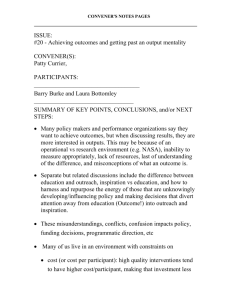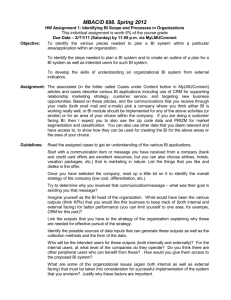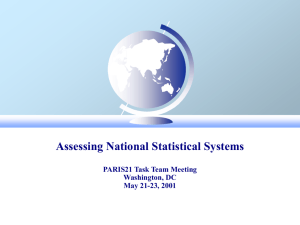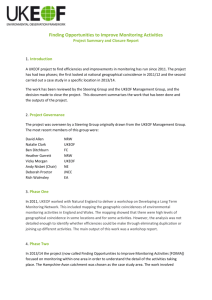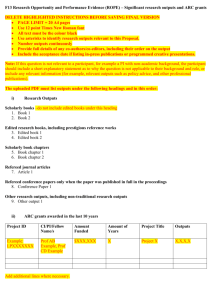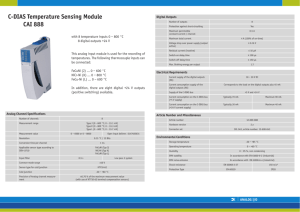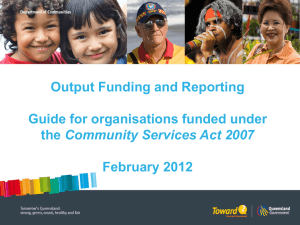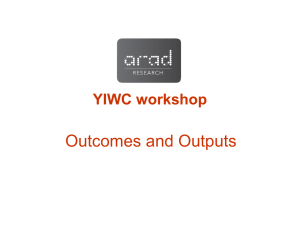PowerPoint-Präsentation
advertisement
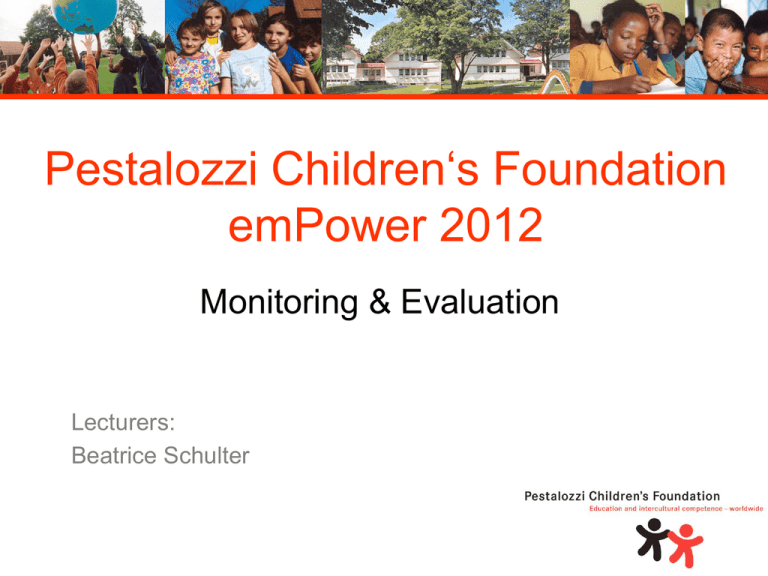
Pestalozzi Children‘s Foundation emPower 2012 Monitoring & Evaluation Lecturers: Beatrice Schulter Objectives You understand what monitoring and evaluation are and their purpose in successful project management. You know a variety of monitoring tools and you reflect their use. You have an insight in different forms of evaluation and you reflect their use. You are prepared to plan the monitoring and evaluation of projects. 2 Why? What do we need monitoring and evaluation for? What? What is monitoring and what is evaluation? How? What are possible monitoring and evaluation tools? 3 Why? Monitoring helps us to check, whether we are effective and efficient during implementation Evaluation helps us to check, whether we have been relevant, effective and efficient This is important to improve the quality of our work through learning monitoring → adjust working plans (action plan, budget) evaluation → improve other projects / future project phases etc. 4 Monitoring is… A continuing observation that uses systematic collection of relevant and selected data to provide the management and the main stakeholders of a programme/project with indications of the progress and achievement of inputs, outputs, outcome as well as the process. 5 Evaluation is… An assessment of a project with regard to its planning, implementation, results - Evaluation makes statements about the relevance of planned outputs/outcome the achievement of the outputs/outcome (effectiveness) the efficiency of the project the sustainability (the impact) Evaluation makes recommendations on the further development of the projects 6 Monitoring is a process which is… Focused Repetitive in time (periodic, regular) in content Monitoring is a process which asks... Do we do the right thing (effectiveness)? Do we do it the right way (efficiency)? 7 Monitoring scheme What have we achieved? (qualitative) Why and how have we (not) implemented something? Monitoring How much have we achieved? (quantitative) Process Monitoring (Inputs) What output & outcome has our work? What strengthens or hinders our work? 8 Results monitoring Context monitoring Monitoring matrix Desired outputs Undesired outputs Desired effects Undesired effects Furthering Hindering Furthering Hindering Outputs Outcomes Processes Context 9 How to use monitoring results? Project learning / Organisational learning Adapting plans (action plan, budget) Controlling 10 Monitoring tools / methods / approaches Group work: What kind of monitoring tools/methods/approaches do you know? Which monitoring tools/methods/approaches are used in your organisation? 11 Monitoring tools Work plans Field visit Spot-check visit (Lessons) Observations Participants meetings Stakeholder meetings PLR Surveys Questionnaires Interviews Tests Official data bases Steering committees All sort of reports - Annual Project Report - Quarterly Project Reports - Reports of the Partner Organisation - School Reports etc. 12 Evaluation is… An assessment of a project with regard to its planning, implementation, results - Evaluation makes statements about the relevance of planned outputs/outcome the achievement of the outputs/outcome (effectiveness) the efficiency of the project the sustainability (the impact) Evaluation makes recommendations on the further development of the projects 13 PCF Evaluations Mid-term evaluations after project phases I & II Final evaluation after project phase III Country programme evaluations every 4-6 years PCF international programme evaluation 2007/2008 14 15 other axis: e.g. driver 16 donor led, partner led, jointly led, participatory Role Play: Project Evaluation Role play in groups of 5 persons Choose one of your projects in the working group Plan the evaluation of this project advocating for your specific interests Write the most important results in terms of evaluation results, evaluation team, area and people considered and evaluation methods on a flip chart 17

